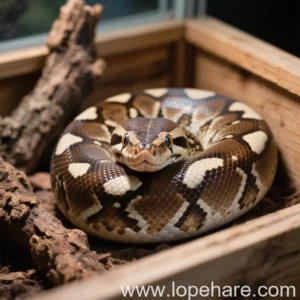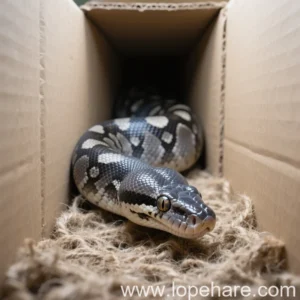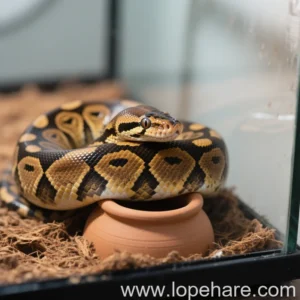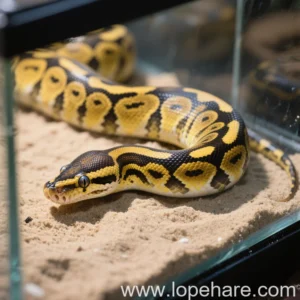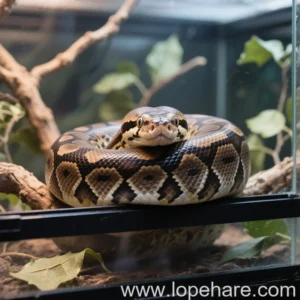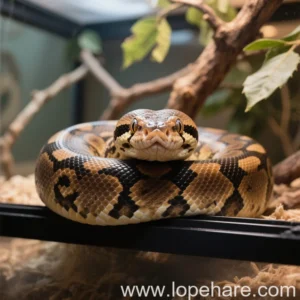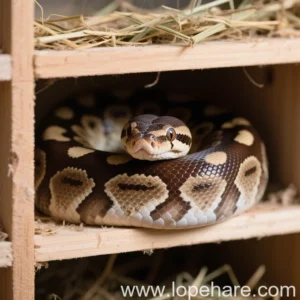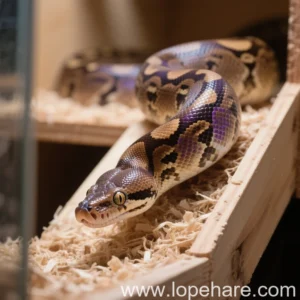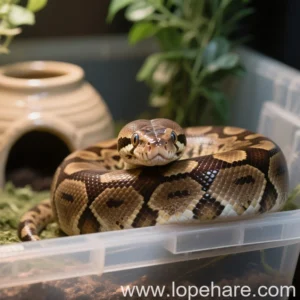
Reptile Travel
How to Travel Safely with Your Ball Python: Essential Tips for Car Rides
As fellow exotic pet enthusiasts here at lopehare, we understand that sometimes life requires you and your beloved pets to travel together. While not ideal, traveling with a reptile like a Ball Python in a car is sometimes necessary for moves, vet visits, or emergencies. Unlike carrying a dog or cat, transporting a snake requires meticulous planning and execution to minimize stress and ensure their safety. Ball Pythons, known for being sensitive to environmental changes and stress, require specific conditions even during short transit. Our goal at lopehare is to provide you with the knowledge needed to make this process as safe and stress-free as possible for your slithery companion.
Why Travel is Stressful for Ball Pythons
Snakes are creatures of habit and thrive in stable environments with predictable parameters. Travel disrupts their routine, exposes them to unfamiliar sights, sounds, smells, and movements, and changes their carefully controlled microhabitat. This can lead to significant stress, potentially causing issues like:
- Regurgitation
- Weakened immune response
- Loss of appetite
- Increased hiding or defensive behavior
- Susceptibility to illness
Minimizing stress is paramount when considering a safe way to travel with a ball python in a car.
Pre-Travel Planning & Preparation
Before your trip, thorough preparation is non-negotiable. Don’t just grab a box and go.
Health Check
Ensure your Ball Python is healthy before traveling. Signs of respiratory infection, shedding issues, or other ailments can be exacerbated by the stress of travel. If you have concerns, consult your reptile veterinarian first.
Feeding Schedule
Avoid feeding your snake for at least 3-5 days before travel, depending on their typical feeding interval and the expected duration of the trip. Traveling with food in their digestive system significantly increases the risk of regurgitation, which is highly stressful and depletes their energy reserves. A snake can safely go weeks without food, so a few missed meals before and during travel are far less risky than a regurgitated meal.
Gathering Supplies
Have everything ready before you leave. You’ll need:
- The travel carrier (discussed below)
- Heating method (heat pack, heat pad with controller)
- Thermometer/Hygrometer (to monitor carrier environment)
- Spray bottle with clean water
- Paper towels
- Duct tape (for securing)
- Small, soft bag (like a pillowcase or snake bag)
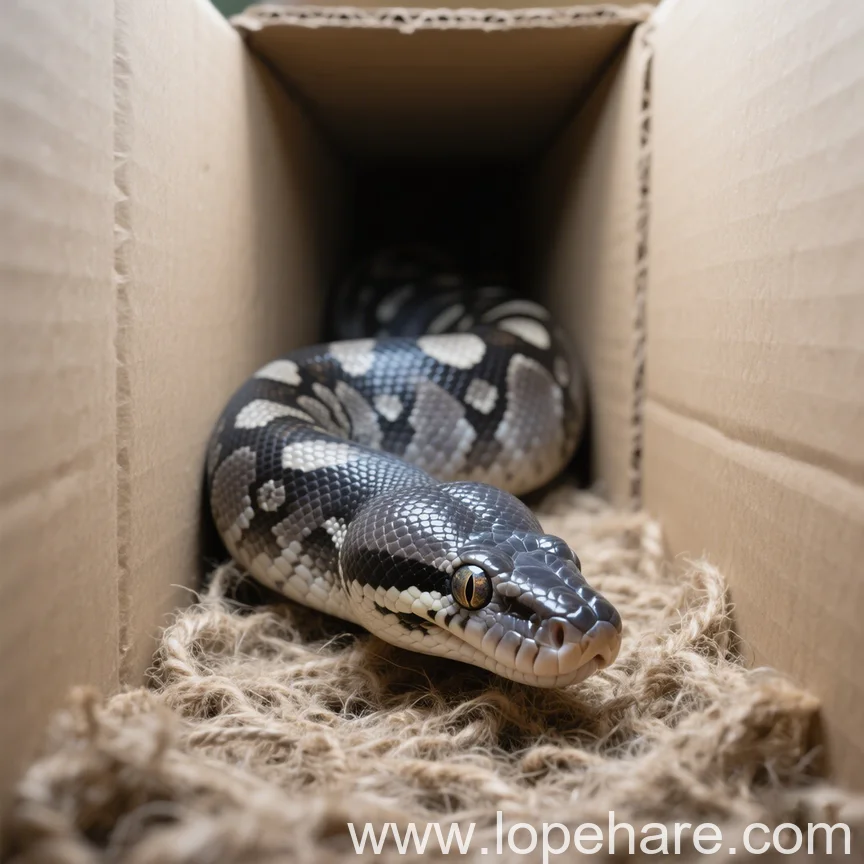
We at lopehare always double-check our packing list to ensure we haven’t forgotten anything critical for the journey.
Choosing & Preparing the Travel Carrier
Selecting the right carrier is crucial for a best carrier for ball python car travel.
Carrier Type & Size
A small, secure container is best. Options include:
- Plastic Tubs with Lids: Easily modified for ventilation, secure latches.
- Pet Carriers: Ensure ventilation isn’t excessive, creating drafts. Some might need modification.
- Dedicated Reptile Transport Boxes: Often insulated, designed for this purpose.
The carrier should be large enough for the snake to stretch out fully but not so large that they are tossed around during movement. A snug fit helps them feel secure. A snake bag (a breathable cloth bag) placed inside the carrier can further reduce movement and stress.
Substrate & Hides
Line the carrier with a few layers of paper towels. This is absorbent, easy to clean, and provides some cushion. Avoid loose substrates that can shift or get into eyes/nostrils during transit. Include a small, secure hide or even crinkled paper towels for your snake to retreat into. This is vital for reducing stress.
Heating During Transit
Maintaining an appropriate temperature is perhaps the most critical factor. Ball Pythons thrive in ambient temperatures around 75-80°F (24-27°C), with a warmer basking spot (which isn’t practical in transit). Aim for the lower end of their comfortable range during travel to minimize stress and metabolism, reducing the risk of regurgitation.
Options for heat include:
- Heat Packs: Chemical heat packs designed for shipping animals are effective. Place them *outside* the primary container, perhaps taped to the lid of a larger outer box, ensuring there is adequate airflow and a buffer layer (like more paper towels) to prevent direct contact and overheating.
- Small Heat Pad with Controller: For longer trips in a car with a power outlet, a small heat pad connected to a thermostat can be used under or on the side of the carrier, again ensuring the snake cannot have direct contact and that the temperature is monitored.
Never Use Heat Rocks or Directly Place Heat Packs Inside: These can cause severe burns. Always use a buffer layer and monitor temperature.
Ventilation
Adequate ventilation is needed, but avoid excessive drafts. If using a plastic tub, drill several small holes on the sides and top. If using a pet carrier, you might need to cover some mesh areas depending on the ambient car temperature to prevent chilling.
During the Car Ride
With the carrier prepared, the journey itself requires vigilance.
Placement in the Car
Secure the carrier so it doesn’t slide or tip. Placing it on a seat or on the floor is usually best. Avoid placing it:
- In direct sunlight (can overheat rapidly)
- Directly in front of air vents (hot or cold drafts)
- In the trunk (poor ventilation, unstable temperature)
Ideally, place the carrier in a position where you can easily monitor it visually without distracting from driving.
Monitoring Temperature
This is paramount. Use a reliable digital thermometer probe placed inside the carrier to constantly monitor the temperature. Aim to keep the carrier’s internal temperature between 72-78°F (22-26°C). Adjust the car’s climate control as needed. Remember that the temperature inside the carrier can differ significantly from the car’s cabin temperature, especially if using supplementary heating or cooling.
Consistent Temperature is Key: Large temperature fluctuations during travel are very stressful. Maintain as stable a temperature as possible.
Dealing with Stops
Never leave your snake unattended in a parked car, even for a few minutes. Car interiors can heat up or cool down dangerously fast depending on external conditions. If you need to stop for fuel or a break, take the snake’s carrier with you into a temperature-controlled building.
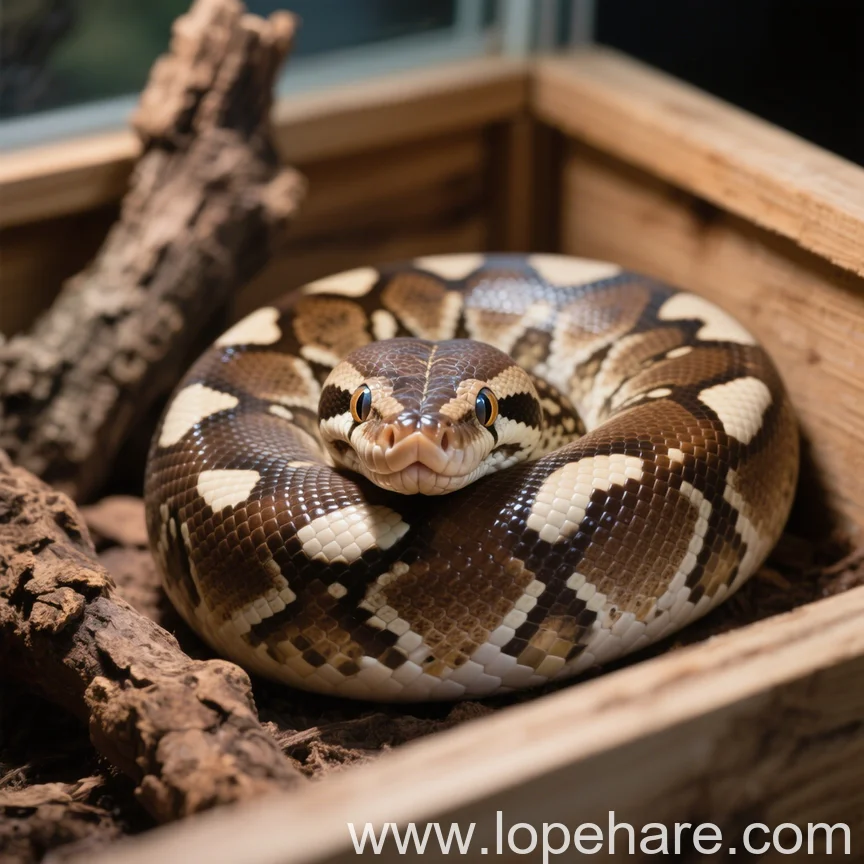
Hydration during transit is generally not necessary for trips under 24 hours, especially since they won’t be eating. Misting might increase humidity but can also chill the snake if the carrier temperature isn’t warm enough or ventilation is poor. Focus on maintaining the correct temperature range and minimizing stress.
According to sources like Wikipedia’s page on *Python regius* husbandry, maintaining stable temperatures and providing hides are key aspects of reducing stress and ensuring welfare in captivity (Source 1).
Arrival & Post-Travel Care
You’ve arrived safely! But the care isn’t over yet.
Acclimation
Move the snake directly into their pre-heated, correctly set up permanent enclosure at the destination. Offer them a hide immediately. Leave them undisturbed for several days to allow them to decompress and acclimate to their new environment (or re-acclimate to their old one if returning home). Avoid handling during this time.
Monitoring Health
Watch for signs of stress or illness over the next week or two. Loss of appetite is common after travel; don’t force-feed. Offer a meal only after they seem settled, perhaps after 5-7 days, and don’t be surprised if they refuse the first offering. Ensure they have access to fresh water (in their enclosure). A small, shallow water dish is appropriate in their home enclosure.
Conclusion
Traveling with a Ball Python in a car is possible but requires careful planning and execution. By focusing on secure containment, maintaining stable and appropriate temperatures, minimizing drafts and direct sunlight, and providing opportunities for the snake to hide and feel secure, you can significantly reduce the risks and stress associated with transit.
At lopehare, we advocate for prioritizing your pet’s well-being above all else. If travel is unavoidable, take the time to prepare properly. Your Ball Python’s health and safety depend on it.
References:
Source 1: Wikipedia. *Ball python – Husbandry*. Retrieved from https://en.wikipedia.org/wiki/Ball_python#Husbandry
